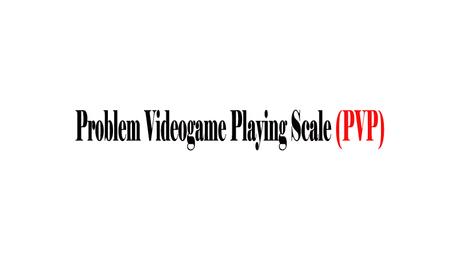
Brief Description:
* Salguero & Moran (2002)
* Includes all but one DSM-IV criteria for both substance abuse and pathological gambling
Versions:
* English (original source article may have used Spanish language scale)
* French
Type of Measure:
* Self-completed
* Dichotomous, forced yes/no choice response
* Nine items
Target Population:
* Ages 13 to 18
* Yes/No
* Summed total
* Higher the score, the higher the level of problem playing
Psychometrics:
Source Reference: Salguero & Moran (2002): 223 Spanish adolescents.
* Reliability: Cronbach's alpha = 0.69
* Validity: Construct: PVP correlated with frequency of play (r = 0.64), duration of play (r = 0.52), longest time per session (r = 0.56) and with the Severity of Dependence Scale (r = 0.47)
Utility for Prevalence Surveys:
* Untested but potentially good
Research Applicability:
* Potentially good
* Biovlac et al. (2008) created a corresponding 'Parents' Videogame Questionnaire' in French, to measure parents' perceptions of their child's gaming.
Copyright, Cost, and Source Issues:
* Public domain (no cost) - Available in source reference
Source References:
Salguero, R. A. T., & Moran, R. M. B. (2002). Measuring problem video game playing in adolescents. Addiction, 97, 1601-1606.
Supporting References:
Bioulac, S., Arfi, L., & Bouvard, M. P. (2008). Attention deficit/hyperactivity disorder and video games: A comparative study of hyperactive and control children. European Psychiatry, 23, 134-141.
* Quick and easy to use
* Used in different countries
* Can be used with all types of video games
Weaknesses:
* Cannot tell if scale was developed in Spanish
* No validated cut-points
* Not validated with adults

